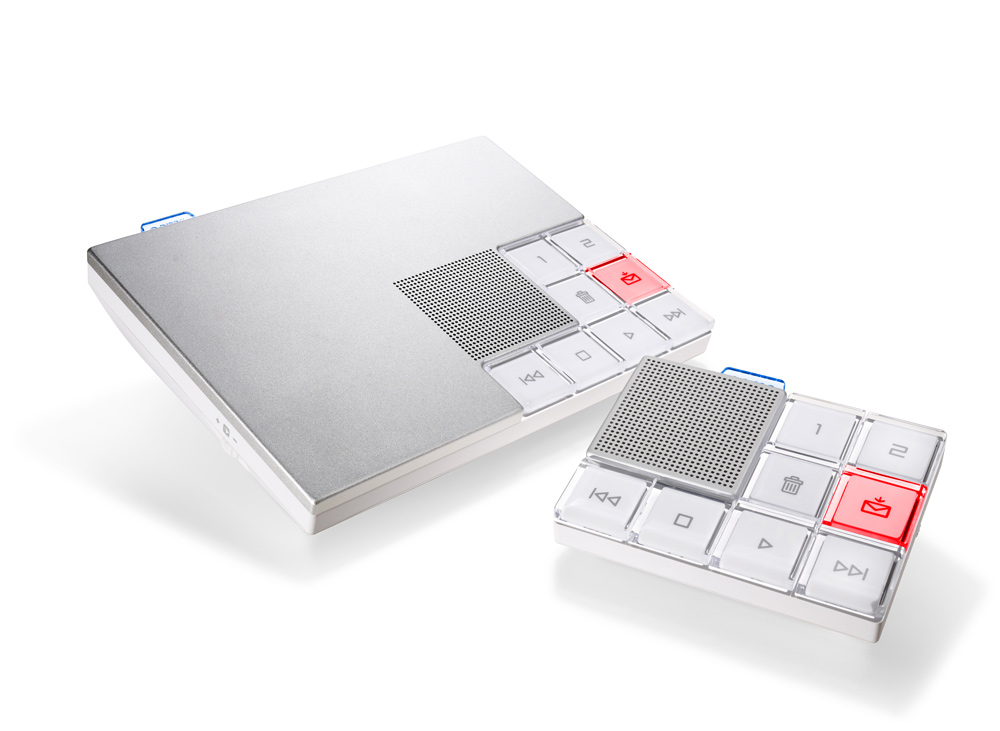The home phone is not dead.
 Richard Buchanan gave me a 30-minute overview of one of the most interesting companies that I met at ITExpo last week. The CMO of the 5-year-old startup talked about the company’s current operation and plans for an upcoming release.
Richard Buchanan gave me a 30-minute overview of one of the most interesting companies that I met at ITExpo last week. The CMO of the 5-year-old startup talked about the company’s current operation and plans for an upcoming release.
Founded in 2004 and shipping product late in 2007, the company offers a SIP gateway appliance and a network service that attaches to the broadband network for a one-time $240 retail price. The consumer takes the appliance home from BestBuy, Costco, amazon.com, Fry’s and many others in a nationwide network of retailers and plugs it in. They visit the company website (www.ooma.com) and authenticate themselves to the service.
To make the service go, users plug their analog phones into the base which is connected to the broadband network or the inhome Ethernet network, which also connects into the inhome twisted pair wiring of the regular phones. Any remote units get power, dialtone and advanced feature interactions from and with the base unit. Users might then plug the kitchen phone or the master bedroom phone directly into the remote unit.
The basic value proposition is that Ooma saves consumers big bucks on their phone bills, and unless they choose the features of the Premier service, there are no more monthly charges for phone service except international LD which is prepaid at something like $.02/minute depending on where you call.
Ongoing Revenues With Premier Service
Part of the authentication process includes denoting the physical address where the hub is located which becomes the E911 physical address. Users are automatically subscribed with a free limited time offer for Premier services which include instant second-line, multi-ring (simultaneous ring), message screening, Do Not Disturb, transfer to voicemail, voicemail forwarding to email, personal numbers that terminate on the same hub, block-listing. These extra services cost $99.99/year.
Richard explains that the company expects pass the 100,000 subscriber milestone later this year.
Clever Adoption of DECT in USA
Upcoming releases of the Ooma appliance incorporate more sophisticated electronics to enable a high quality in-building wireless service. Unlike 900 MHz cordless phones which were popular and often interfered with multiple users in a neighborhood, DECT is a digital standard but was not supported in the USA until the FCC enabled spectrum for the service in the 1920 – 1930 MHz band, in 2005. Ooma plans to enable and sell DECT phones that work with the next gen Ooma base station.
This is a stylish and convenient refresh of the home phone systems that most consumers have cobbled together over many years. This design, unlike the original Ooma appliance design which required the use of an analog phone, is a clean replace, and at something like $49/handset to a maximum of six extra phones, is a great deal. But, wait there’s more…
… Richard also explained how the new base uses bluetooth technology to allow the busy homeowner to put their bluetooth-enabled mobile phone next to the Ooma base, where it might recharge overnight. Now, however, the base will sync up with the mobile phone and can process all incoming calls to the mobile phone as if they were home calls – all the remote extensions ring and picking up the call on a DECT handset is the same experience as picking up the call on the mobile phone in the first place. This is an awesome feature.
New services that Ooma may plan to incorporate with the design of the new device includes SMS, VoIP client on WiFi-phones such as the Apple iPhone, home automation features, wireless door intercom and network monitoring services.
It strikes me that these kinds of innovations will surely accelerate the demise of landline services in the USA.
Check out this cool commercial on YouTube for Ooma:









